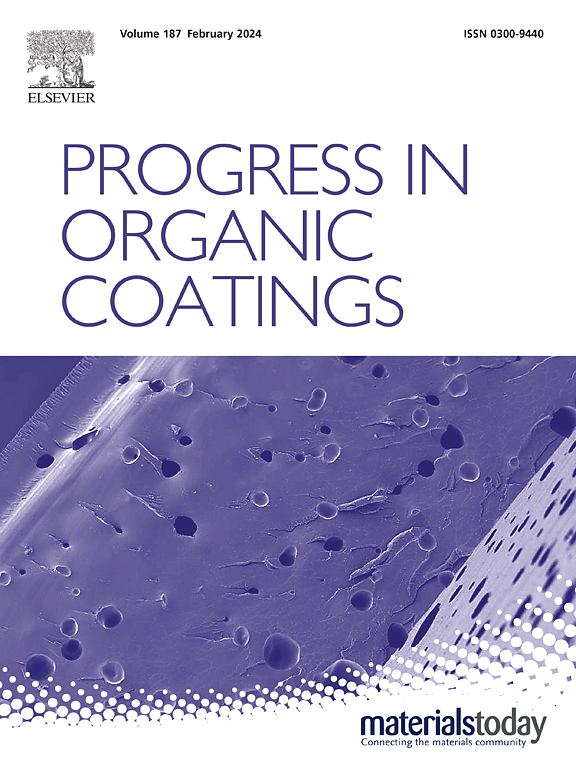Sustainably sourced covalent adaptable networks derived from eugenol for flame retardant, transparent and self-healing coating applications
IF 6.5
2区 材料科学
Q1 CHEMISTRY, APPLIED
引用次数: 0
Abstract
High-transparent polycarbonate (PC) is often used to replace glass in construction, but its poor flame retardancy limits its use. In recent years, materials for covalent adaptive networks (CANs) have gained much attention. The preparation of CANs and their application to flame retardant coatings is an innovative approach. In this work, a dithiol-containing borate ester (B2SH) and P-containing eugenol monomer (TEP) were synthesized. The flame retardant self-healing eugenol bio-based covalent adaptive network (TEP-SH) was prepared by copolymerizing TEP with B2SH and polythiol monomers (such as pentaerythritol tetra(3-mercaptopropionate) (4SH)) via photo-induced thiol-ene polymerization. Among these samples, TEP/B2SH/13%4SH has the best comprehensive performance, while superior flame retardancy, self-healing and shape memory properties and high transparency are preserved. TEP/B2SH/13%4SH was coated on a PC board for the cone calorimeter test. Compared with those of PC, PHRR and THR decreased by 31.3% and 24.5%, respectively, and the char yield (CY) increased from 3.5% to 16.6%. Moreover, TEP/B2SH/13%4SH exhibited excellent adhesion to PC with a high shear strength (2.77 MPa). Therefore, TEP/B2SH/13%4SH has excellent performance and can be used as a flame-retardant, transparent and self-healing coating, thus ensuring the safe application of PC in building materials.

求助全文
约1分钟内获得全文
求助全文
来源期刊

Progress in Organic Coatings
工程技术-材料科学:膜
CiteScore
11.40
自引率
15.20%
发文量
577
审稿时长
48 days
期刊介绍:
The aim of this international journal is to analyse and publicise the progress and current state of knowledge in the field of organic coatings and related materials. The Editors and the Editorial Board members will solicit both review and research papers from academic and industrial scientists who are actively engaged in research and development or, in the case of review papers, have extensive experience in the subject to be reviewed. Unsolicited manuscripts will be accepted if they meet the journal''s requirements. The journal publishes papers dealing with such subjects as:
• Chemical, physical and technological properties of organic coatings and related materials
• Problems and methods of preparation, manufacture and application of these materials
• Performance, testing and analysis.
文献相关原料
公司名称
产品信息
阿拉丁
anhydrous magnesium sulfate
阿拉丁
2, 2-dimethoxy-2-phenylacetophenone
阿拉丁
dipentaerythritol hexakis(3-mercaptopropionate)
阿拉丁
pentaerythritol tetra(3-mercaptopropionate)
阿拉丁
trimethylolpropane tris(3-mercaptopropionate)
阿拉丁
1,4-phenylenebisboronic acid
阿拉丁
phosphorus (V)oxychloride
阿拉丁
Eugenol
 求助内容:
求助内容: 应助结果提醒方式:
应助结果提醒方式:


